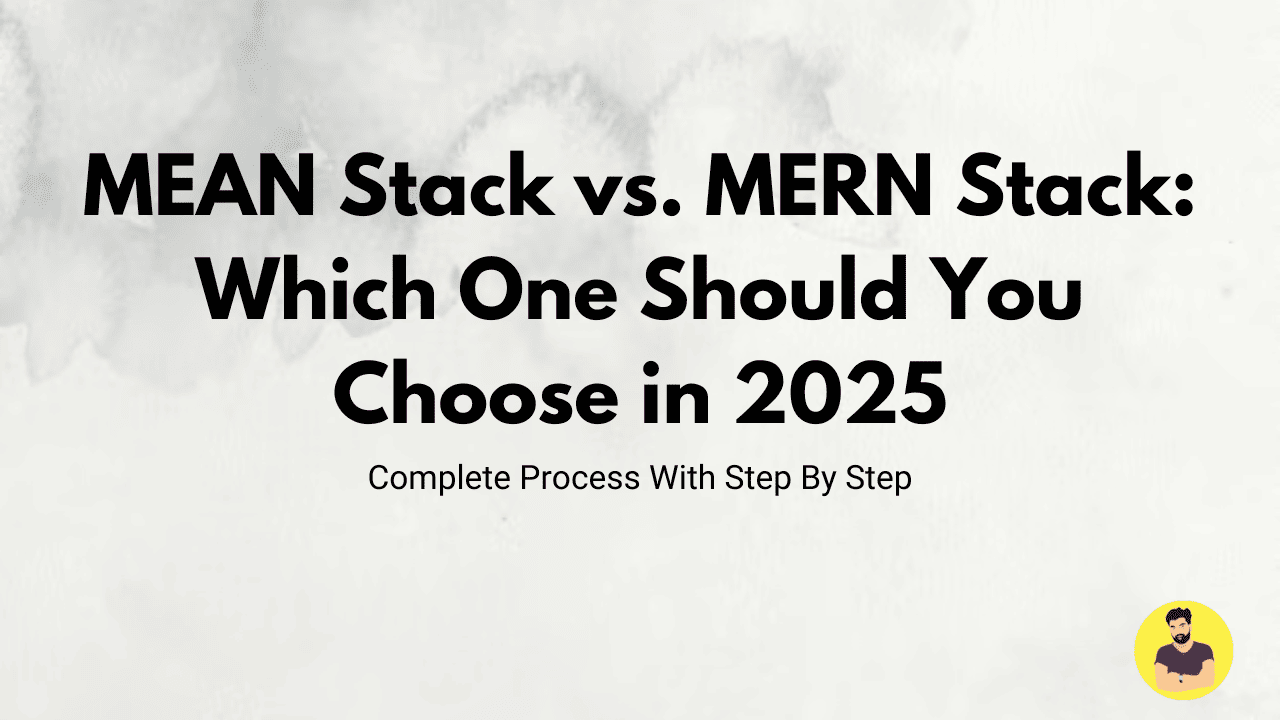
1. MEAN Stack vs. MERN Stack: Which One Should You Choose in 2025
In 2025, the demand for full-stack development continues to grow, and two of the most popular technology stacks remain MEAN (MongoDB, Express.js, Angular, Node.js) and MERN (MongoDB, Express.js, React.js, Node.js). But which one should you choose? Let’s break it down step by step with real-world examples to help you make an informed decision.
1. Understanding MEAN Stack
-
Components:
-
MongoDB (NoSQL database)
-
Express.js (Backend framework)
-
Angular (Frontend framework)
-
Node.js (Runtime environment)
-
-
Best For:
-
Enterprise-level applications
-
Large-scale Single Page Applications (SPAs)
-
Real-time collaboration tools like Google Docs
-
💡 Example: If you are building a corporate dashboard that requires a structured, well-organized frontend with two-way data binding, MEAN Stack is a better choice.
2. Understanding MERN Stack
-
Components:
-
MongoDB (NoSQL database)
-
Express.js (Backend framework)
-
React.js (Frontend library)
-
Node.js (Runtime environment)
-
-
Best For:
-
Dynamic web applications
-
High-performance, interactive UI applications
-
Social media platforms like Facebook
-
💡 Example: If you are developing a social networking app where user experience and frontend performance are crucial, MERN Stack would be ideal.
3. Key Differences Between MEAN and MERN
| Feature | MEAN Stack | MERN Stack |
|---|---|---|
| Frontend Framework | Angular (Full-fledged MVC framework) | React.js (Lightweight library) |
| Performance | Slower due to two-way data binding | Faster because of virtual DOM |
| Scalability | Best for large enterprise apps | Best for dynamic, interactive apps |
| Learning Curve | Steeper due to TypeScript in Angular | Easier as React uses JavaScript |
| Community Support | Strong but less than React | Highly active community |
4. When to Choose MEAN Stack?
✅ If you need a well-structured, scalable solution
✅ If your project requires complex enterprise applications
✅ If your team is comfortable with TypeScript and MVC architecture
💡 Example: E-commerce platforms like Alibaba use Angular for structured UI and performance optimization.
5. When to Choose MERN Stack?
✅ If you need high-speed performance and better UI experience
✅ If your project is a dynamic and interactive web application
✅ If your team prefers JavaScript-based development
💡 Example: Instagram uses React for a seamless user experience.
6. Which One Should You Choose in 2025?
🔹 Choose MEAN Stack if you’re building enterprise-level apps that require structured architecture and maintainability.
🔹 Choose MERN Stack if you’re building highly interactive applications with real-time updates.
🚀 Future Trend: In 2025, React.js continues to dominate the frontend ecosystem, making MERN a more popular choice. However, MEAN Stack remains reliable for enterprise-grade applications.
Final Thoughts
Both MEAN and MERN have their strengths. Your choice should depend on your project requirements, team expertise, and long-term scalability needs.
💬 Which stack do you prefer for your projects? Let us know in the comments!
Related Tutorials
10 Most Important Tasks Every MERN Stack Developer Should MasterHow to Build a Full-Stack CRUD App with MERN Stack
Best Practices for Authentication & Authorization in MERN Stack
1. MEAN Stack vs. MERN Stack: Which One Should You Choose in 2025
Top 10 Node.js Best Practices for Scalable and Secure Applications
What Tasks Should You Give to Interns in a MERN Stack Project